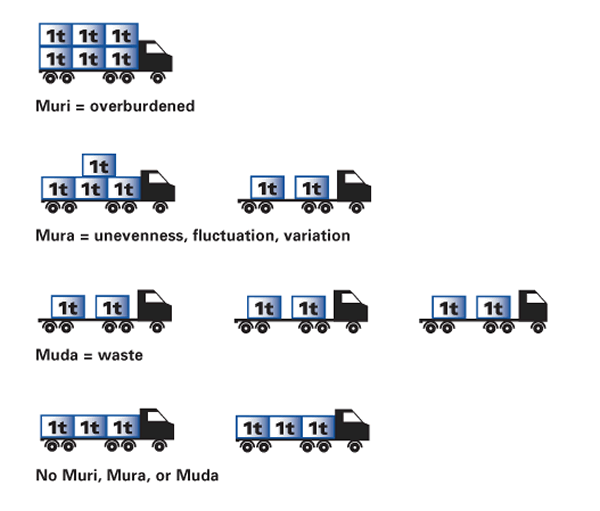Identifying value, creating flow, and seeking perfection using value stream mapping and establishing a pull system helps in setting up the ideal lean process. Every process focuses on delivering value with utmost customer satisfaction. Toyota's production system used activities that do not add value to the product focusing on a lean economic model to eliminate waste. This management philosophy was developed by Taiichi Ohno for creating automobiles on-demand after World War II.
Agility requires flexibility and Lean is all about improving efficiency with total elimination of waste.
There are many activities that do not add value to products or services and ultimately to our customers. Elimination of waste is one of the key considerations for driving continuous improvement, continuous exploration, and continuous releases, which leads to bringing up operational and organizational efficiency.
For any agile team, the important objective is to reduce the team overheads, follow the cadences, bring efficiency and reduce unnecessary meetings.
Example: 15 Minutes standup time can be reduced further or backlog refinement time can be reduced with a learning curve.
Muda-Mura-Muri are 3 forms of waste.
It helps in understanding waste to achieve better efficiency. Since they are interrelated, optimizing all three wastes produce great results. Eliminating just one is not an answer. The focus should be on work in small batches with continuous learning and incremental change.

Muda
Muda – (A Japanese word meaning “Waste; Uselessness; Futility”)
Muda talks about processes or activities that do not add value. There are two types of Muda.
Muda Type 1 wastes are those that are essential to producing value/product, mainly non-value-added activities in the processes that are necessary for customers.
Muda Type 2 wastes are those that are non-essential to producing value/product, mainly non-value-added activities in the processes that are not necessary for customers. So, Muda Type 2 should be eliminated first. Here, we should always thrive to learn from the past and get better.
Example: Defects, work done partially, changes to user story when it is in progress.

Mura
Mura – (A Japanese word meaning “Unevenness; Irregularity; No Uniformity”)
Mura talks about inconsistent quality. Improving productivity means working faster – this is a myth and it needs to be corrected. Bringing flexibility, agility, openness, and working on flow reduces Mura.
Example: Closing/accepting user stories towards the end of iterations.

Muri
Muri (a Japanese word meaning “Unreasonableness; Impossible; Too Difficult; Too Complex”)
Muri talks about the results of exhausting resources. When operators/resources or machines are pushed through their limits then it results in Muri. Prolonged periods of overburdened work would need to be reduced in order to eliminate Muri. Muri can result from Mura. The solution to Mura may solve Muri.
Example: Team has given deadlines that are constantly too short for their own skill level.

When Mura is not reduced, it increases the possibility of Muri and therefore Muda.
Plan-Do-Check-Adjust (PDCA) loop certainly helps in reducing-minimizing-eliminating Muda-Mura-Muri.

Plan helps us in reducing-minimizing-eliminating Muri.
Do helps us in reducing-minimizing-eliminating Mura.
Check helps us in reducing-minimizing-eliminating Muda.
Adjust includes retrospectives and feedback loops which lead to course correction and continuous improvement.
In conclusion, it is not always easy to find an efficient and appropriate solution. As change is the only constant thing in this dynamic world, the focus should be on continuous improvement, and adapting to changes means adapting to processes. Reducing Muda can lead to Muri and in turn, reduces Mura. Most of the time, we focus on reducing or eliminating Muda, however without addressing Mura or Muri simply results in more Muda.
Lean principles and agile practices can certainly help in eliminating Muda-Mura-Muri.

Image Source: Lean Enterprise Institute

